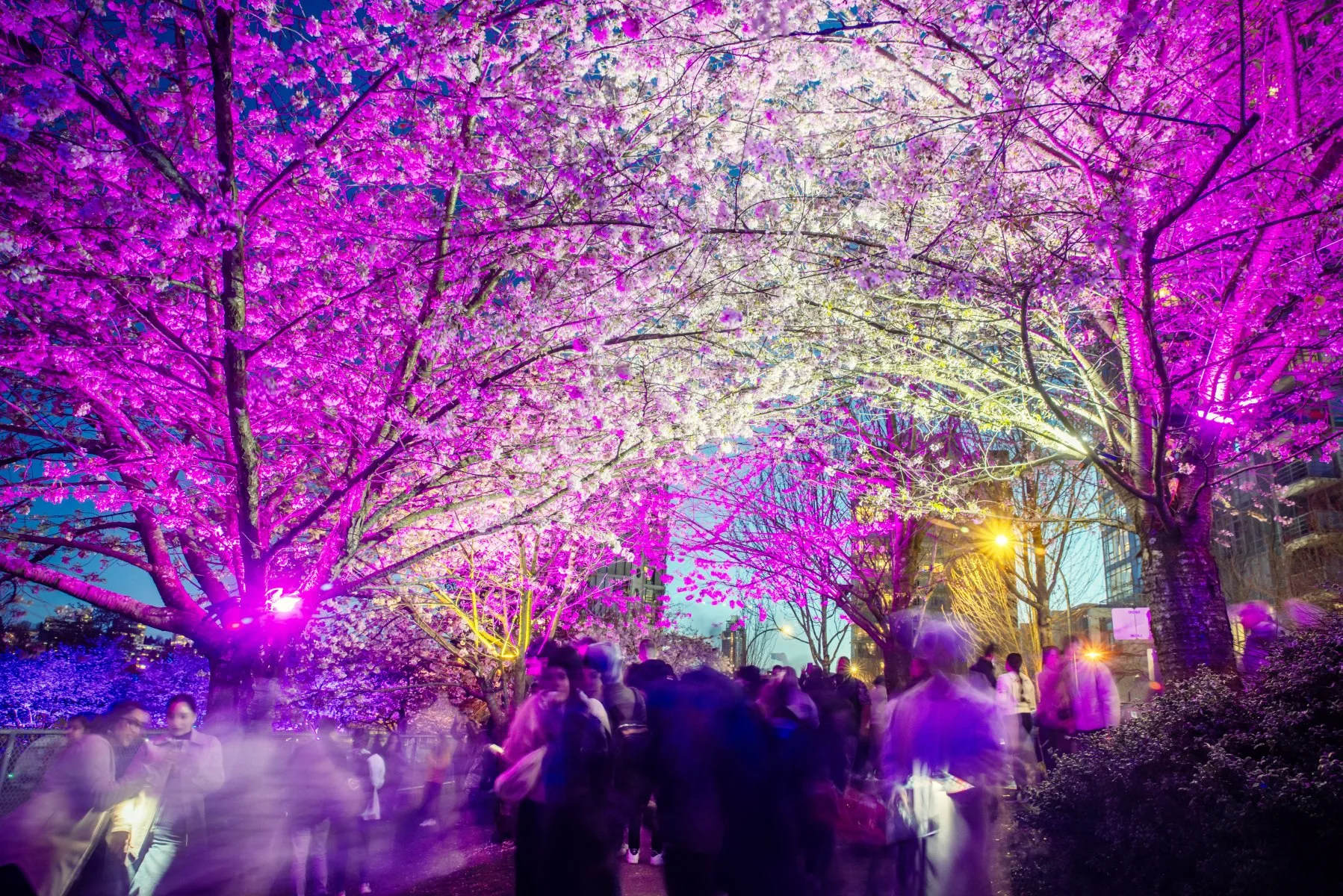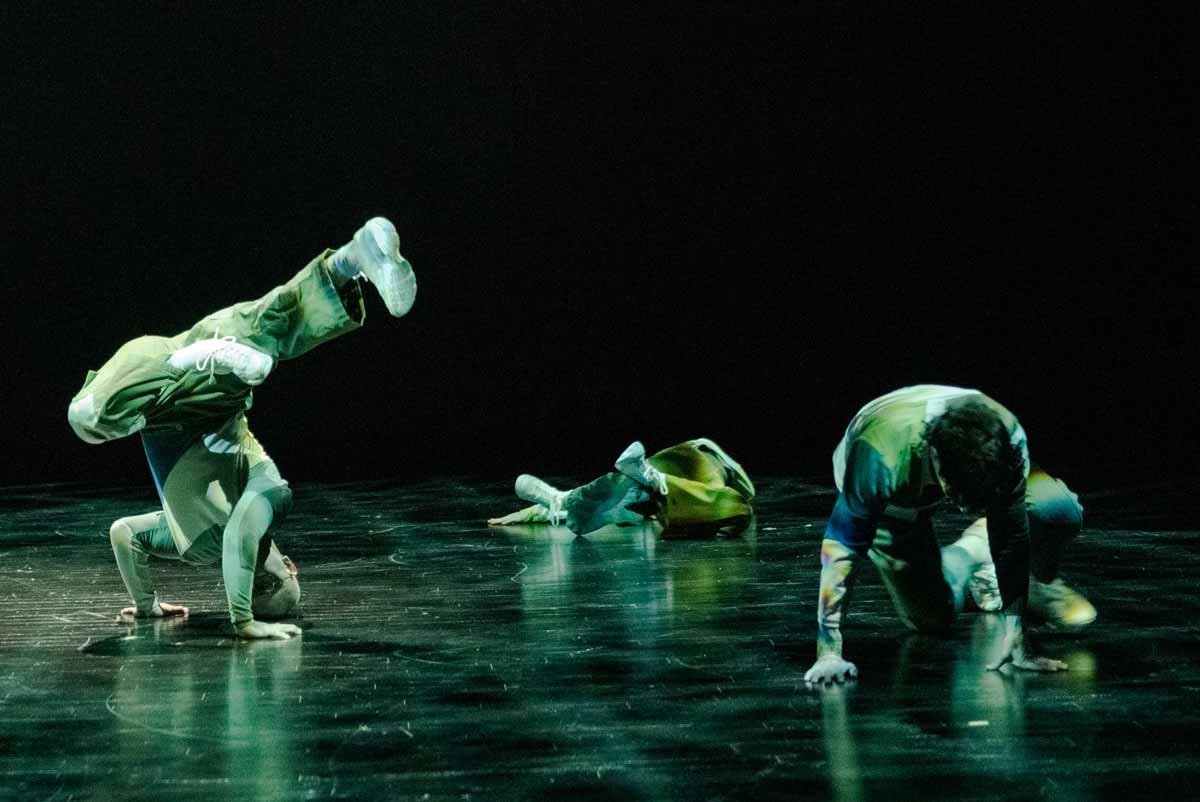Downtown Eastside Heart of the City Festival lets area residents tell their own stories
Savannah Walling and Terry Hunter, who founded the fest 21 years ago, are handing over the reins after this year
Terry Hunter (left) and Savannah Walling. Photo by David Cooper
Vancouver Moving Theatre in association with the Carnegie Community Centre, the Association of United Ukrainian Canadians, and community partners present the 21st Annual Downtown Eastside Heart of the City Festival from October 30 to November 10 at various venues and online
SOME 25 YEARS ago, local artists Terry Hunter and Savannah Walling put on a festival all about the Strathcona neighbourhood, where they lived. Featuring cultural groups from the community, it ran for seven years and told stories about the area and its residents to wild success. Seeing the positive reaction from people in the audience was an eye-opener for the married couple. Hold that thought.
In 2003, their company, Vancouver Moving Theatre, produced In the Heart of a City: The Downtown Eastside Community Play in association with Carnegie Community Centre Association, the Vancouver Japanese Language School, and the Japanese Hall. With 80 community members in the production and some 2,000 involved behind the scenes, it also proved to be a hit.
Both events ultimately led to the Downtown Eastside Heart of the City Festival, which is marking its 21st anniversary this year. Guided by a theme of “threads of connection”, it’s the last fest that Hunter and Walling—who are members of the Order of Canada—will helm as directors before passing on the torch to new leaders.
In a Zoom interview with Stir, the two explain that they received an invitation from the Carnegie Community Centre back in 2004 to mount a festival for, with, and about the Downtown Eastside. Even though they didn’t know what the future would hold, they included the word “annual” in the inaugural edition, and from there, the Downtown Eastside Heart of the City Festival took on a life of its own.
“The dream was always to establish a festival that would be the community’s festival and that would be sustainable year after year,” Hunter says. “We agreed to take on the responsibility of behalf of the community, as stewards of the festival on behalf of the community. That’s really, really important. We didn’t see the festival as our festival; we saw the festival as the community’s festival and we were honoured and privileged to be in that position to work with the community, to establish the festival, and to grow it and to have it in the place it is now.”
That place is a multi-day celebration that features more than 100 different events in the Downtown Eastside, including Chinatown, Gastown, and Strathcona—where Walling and Hunter still live—at some 40-plus venues as well as online. The 21s edition runs from October 30 to November 10.
“The establishment of the festival very much came out of the huge success of the Downtown Eastside Community Play which was a singular event at the Japanese Hall and it was so successful,” Hunter says. “What was amazing was the response from the community who were seeing their stories, seeing their lives, and seeing their culture on-stage; they were seeing themselves on stage and the excitement that they felt and the pride they had in their own stories… That was our wow.”
“It was like uncovering this treasure box,” Walling says. “So many people that had been part of the project—either as performers, or participating backstage, or as volunteers, or watching the shows—were really, really hungry for more art-making opportunities. We wanted to give voice to them. It was also to invite the larger city and community outside to come the festival to see the authentic community, and that included the pain and the challenges people have gone through. But that also included all the wisdom and the strength and the resilience and the lived experience—the lived wisdom.”
Terry Hunter (left) and Savannah Walling. Photo by David Cooper
Having the community tell its own stories is at the fest’s core. Hunter recalls a line in a poem by late local artist Sandy Cameron, which states “If you don’t tell your own stories, somebody else will tell them for you and you won’t like what they say.” He expands on that thought: “You gotta tell your own stories,” he says. “It’s your lived experiences, your wisdom. You can take pride in the stories of the community and the things that have happened here, and you also get to grapple with all the painful things that happen: Why is there addiction in this neighbourhood? Why is there poverty? Then people get to talk about it all from the community’s perspective, rather than outside people coming in and saying, ‘This is what’s good for you.’ It’s really about grounding the community in taking agency over who they are.”
The festival aims to show the positive aspects of the neighbourhood that often get overlooked because of the challenges it faces in terms of poverty, homelessness, drug addiction, and mental-health issues. While providing employment for people in the community, the fest aims to build relationships and connect people.
“There are residents of the neighbourhood and other people who want to have a better, more honest understanding of what is happening,” Walling says. “We’ve ended up attracting tourists as well who come in and who’ve been really fascinated by the sense of community and presence of community here. They’ve ended up coming to event after event after event, and people are coming in from other parts of the city saying it’s very meaningful to experience what it is like to be part of a community. We wanted to shed an honest light upon the cultural wealth of the community and the lived wisdom within it.
“What gives me hope,” she adds, “are the creative, committed people who live and work in the Downtown Eastside who are taking care of their neighbours, caring for their community, and have innovative and far-seeing ideas for solutions to serious urban challenges.”
With so many events taking place over the fest’s 12 days, it’s hard for Walling and Hunter to pick highlights, but among them are the Sojourners, with Khari McClelland, whose performance brings the fest to a close, and The Prop Master’s Dream, a fusion opera by Vancouver Cantonese Opera at the Vancouver Playhouse on November 2. There’s a joint program called Ritual-Spective–RE: turning 迴融: 迴歸 and Chinatown Stories Audio Tour: Roving Conversations Between Intergenerational Pairs at the Chimerik Chinatown Art Space November 1 to 3, featuring artists Sammy Chien and Andrea Nann.
Threads of Support & Resilience—EartHand Gleaners Community Celebration on November 2 at Trillium Park is followed by a procession to Ancestral Foodways Día De Los Muertos Festival at Strathcona Park. Kin features an evening of flamenco dance with looping technology by artists AJ Simmons and Kelty McKerracher at KW Production Studio on November 9. The Two Amigos Walking Tour with John Atkin and Bob Sung on November 10 will explore the neighbourhood’s history, culture, and architecture. There’s much more.
Helping with the fest are general manager Lalia Fraser and artistic producer Alexandra McDougall, who together will take over in 2025.
“Once an artist, always an artist,” is how Hunter sums up what will come next for him and his wife; they are not retiring but will be seeking new creative opportunities. He will get back to jazz piano and she will continue collaborating with Olivia C. Davies of O.Dela Arts. They also hope to travel, with Mardi Gras in Brazil on their bucket list.
“I just feel astonished at what has happened over the years with the company and the festival—the journeys, the extraordinary artists, the cultural knowledge keepers and organizations that we’ve had the honour to work with and to learn from, to be inspired by,” Walling says. “It’s been hugely challenging with many bumps, and we’re learning always, but it’s been a beautiful journey.”
Hunter adds: “It’s been quite extraordinary. This place has been our home, and what an extraordinary community it has been for us.” ![]()



































